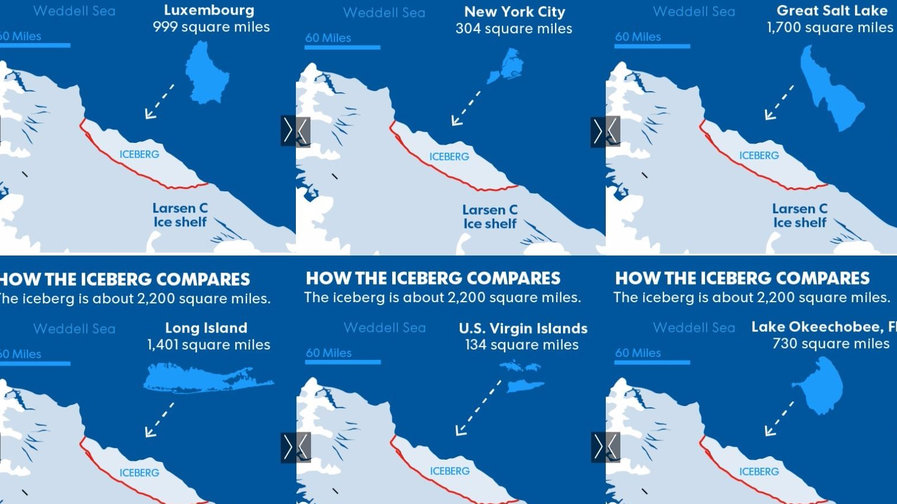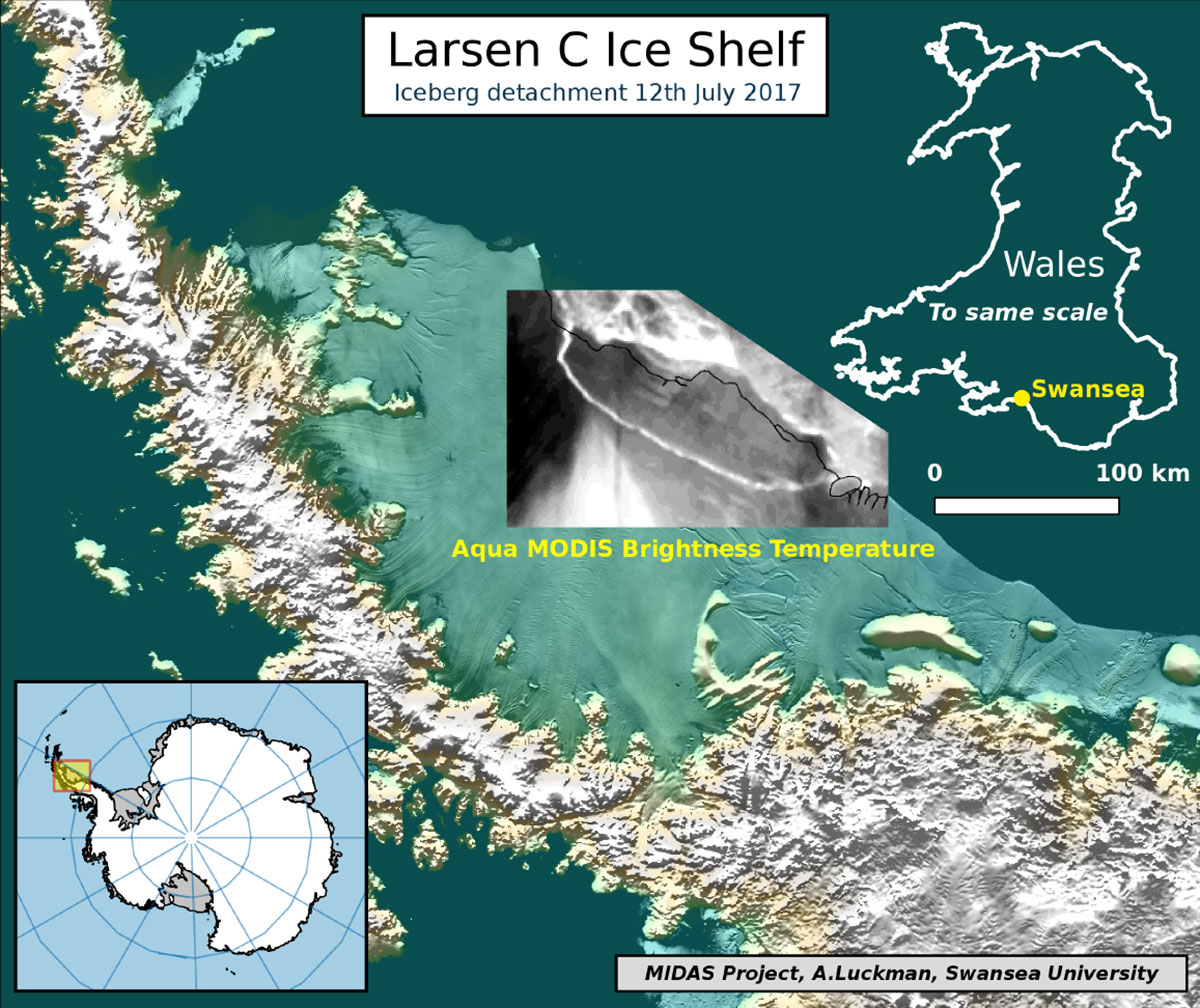
Iceberg A-68 is slowly drifting towards the open sea. Dubbed the ‘monster berg’, A-68 broke off from the Larsen C ice shelf on the Antarctic peninsula just over a week ago, reducing its size by about 12%. Recent satellite images show the gap between the new iceberg and the remaining ice shelf is widening.
It will most likely drift north through the Weddell Sea into the Atlantic, towards South Georgia and the South Sandwich Islands. Eventually, it may prove an obstacle to shipping – even after it inevitably breaks up into smaller parts.
A-68 is not the first massive iceberg to calve from the region. In January 1995, a large part of the Larsen A ice shelf collapsed, and in March 2002, the same happened at Larsen B. The events have been linked to warmer temperatures in the region.
What’s special about the latest collapse, is the size of the iceberg. At around 6,000 sq. km (app. 2,300 sq. mi), A-68 is one of the biggest icebergs ever recorded (1). It weighs about one trillion tonnes.
Huge, unfamiliar objects like A-68 need some context for us to understand their true size. Enter… Wales. “The size of Wales” is a recurrent measure of geographic size in news reports, often used to give an idea of the area of rainforest destroyed, for example (2). As shown on this map, the world’s largest iceberg du jour is about a quarter the size of the British principality.

But Wales was just the beginning of it. Since the interest in A-68 was global, a curious phenomenon occurred: the iceberg was compared to areas from around the world, providing an insight into the relative sizes of some of the world’s more notable geographies.
Depending on your local news outlet, A-68 is the size of Delaware, seven times New York City, four times Greater London, twice the size of Luxembourg, twice the volume of Lake Erie, and long enough to cover the distance between the Australian cities of Newcastle and Wollongong.
…
The post Wait a Minute, How Big is that Iceberg? appeared first on FeedBox.